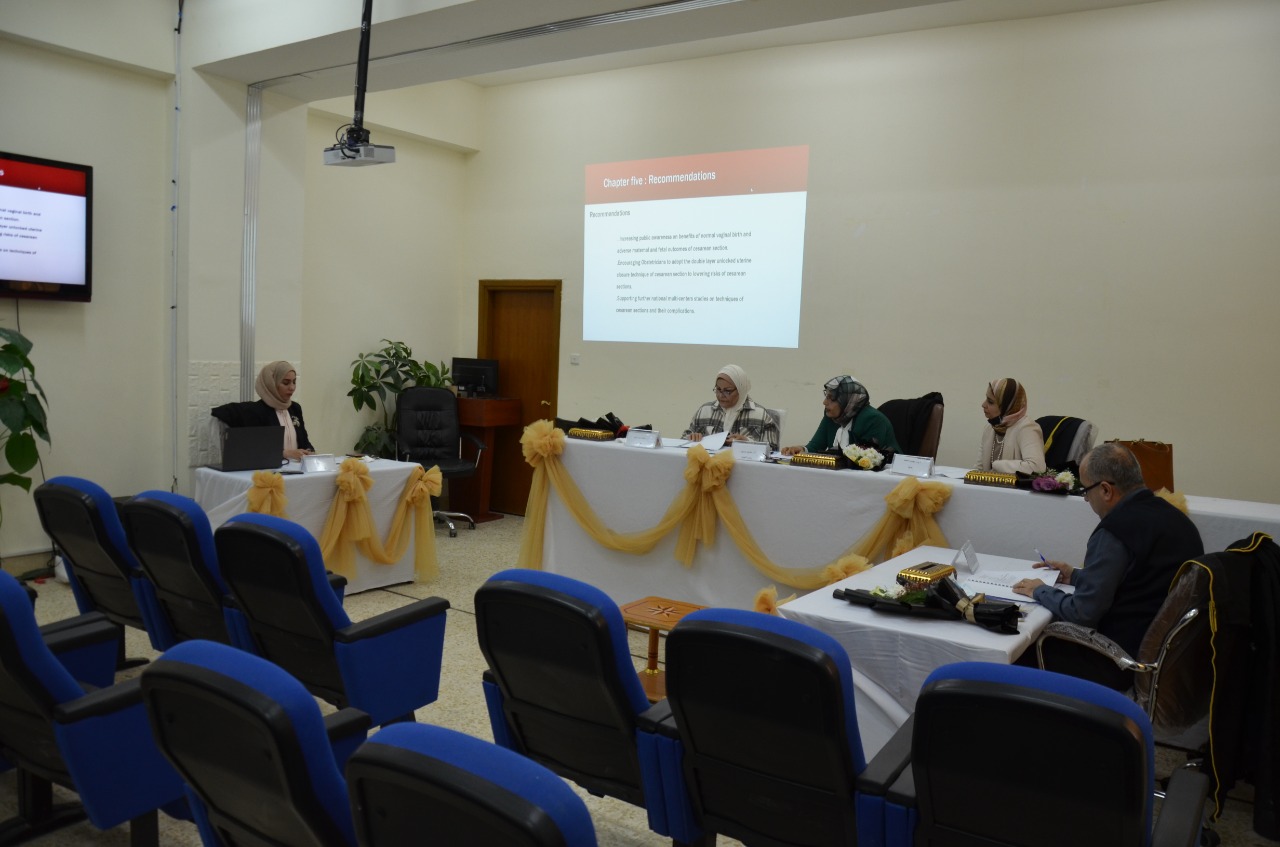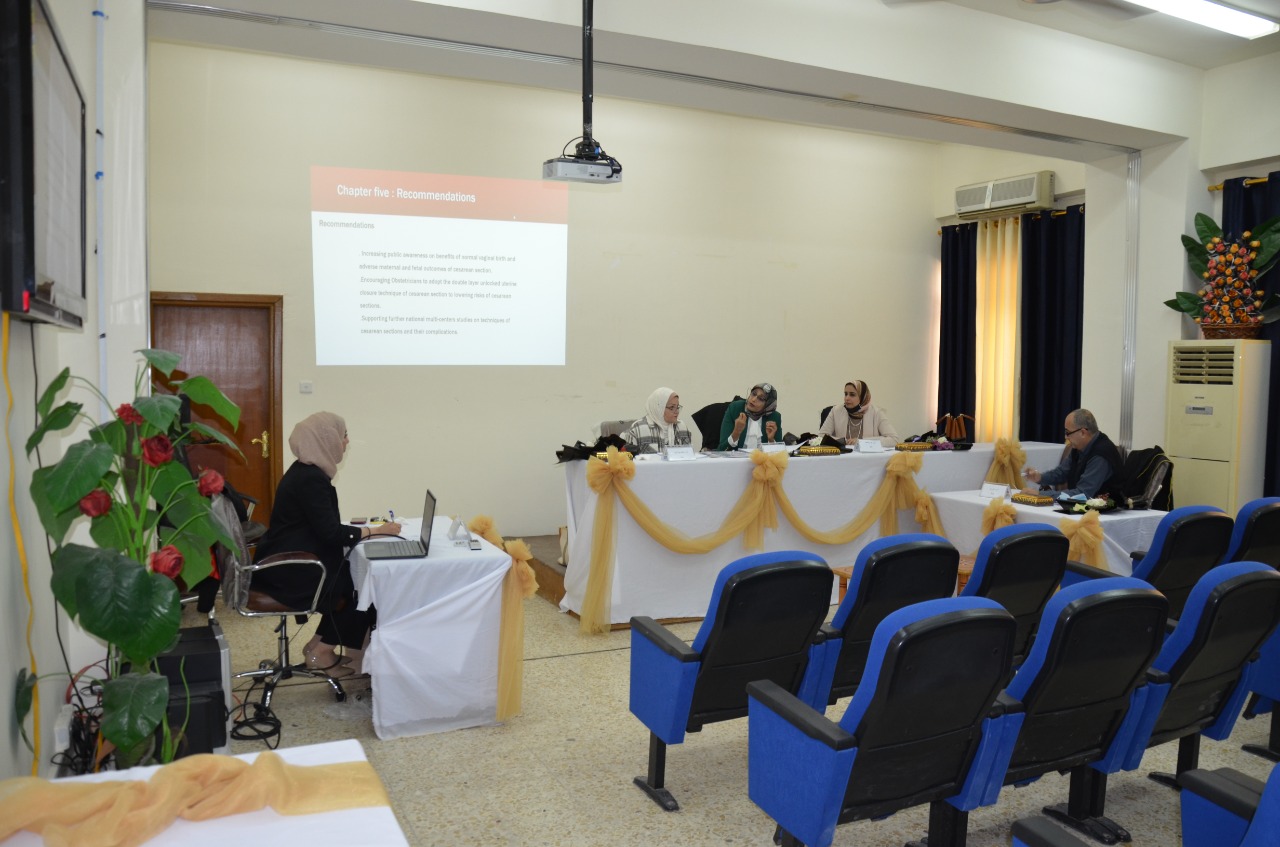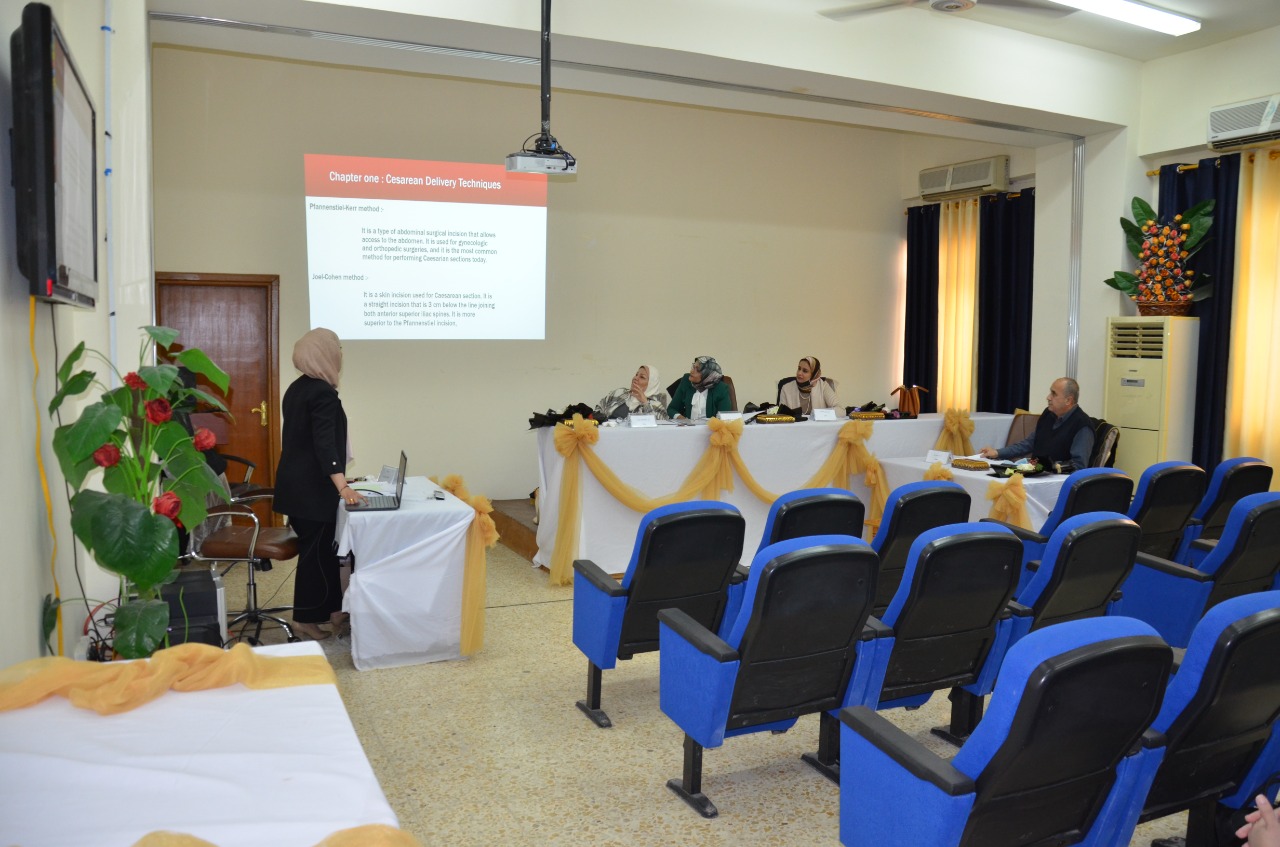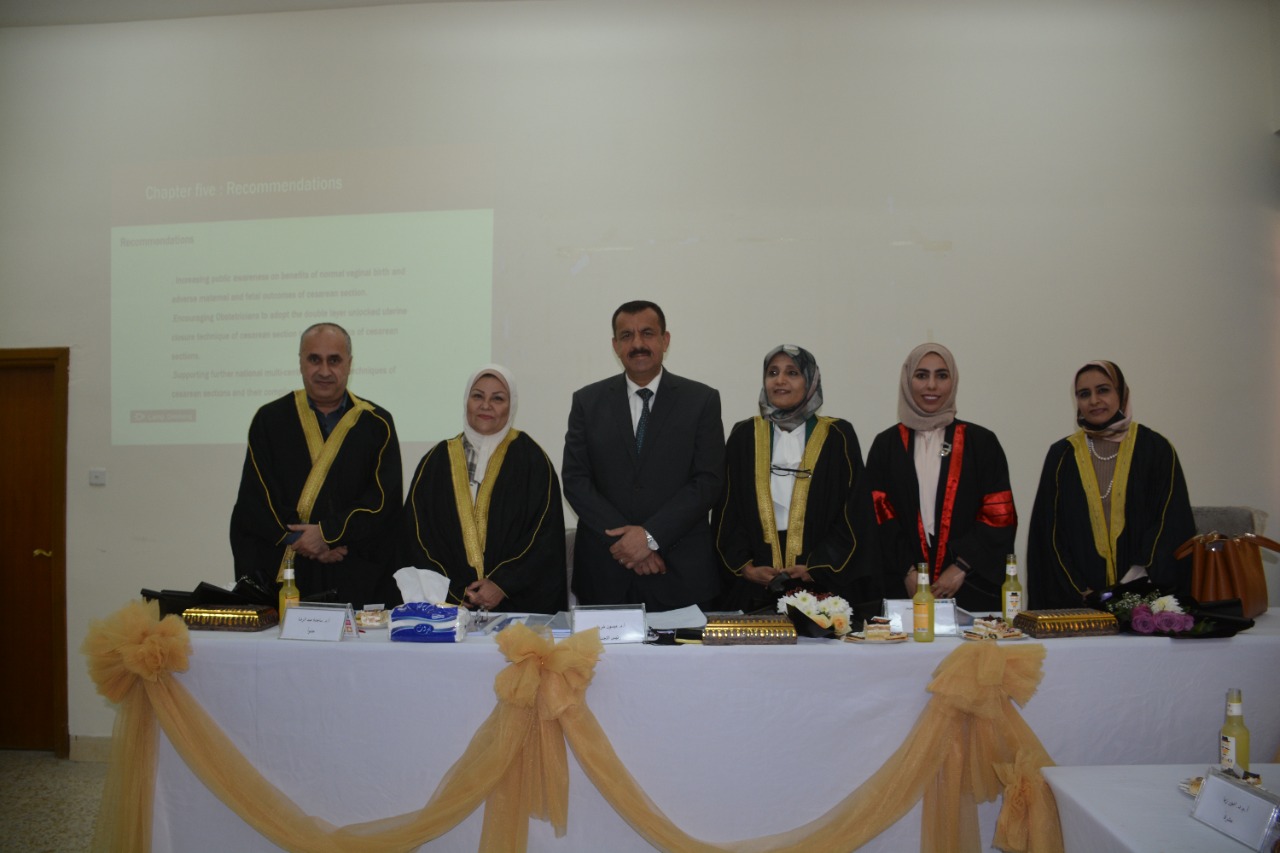





A master's thesis at the College of Medicine, University of Basrah, discussed the effect of the cesarean scar closure technique on the results of ultrasound examination and symptoms of diseases. The research presented by student Heba Ali Mohamed aims to follow up the progression of healing in the lower caesarean scar that was examined by ultrasound in 3-6 months after caesarean section and gynecological symptoms such as dysmenorrhea and spotting after menstruation by comparing the single-layer closure technique and the double-layer technique. The results after caesarean section showed that 39% of women who underwent a caesarean section developed dysmenorrhea and 29% of them developed spotting after menstruation. The mean thickness of the residual myometrium measured by ultrasound examination of women after caesarean section was 1.4 mm, 38% of women with single-layer uterine closure had postmenstrual spotting compared to 20% of women with double-layered non-closed technique with Big statistical difference. The mean residual myometrial thickness measured by ultrasound for women who underwent caesarean section with open double-layer closure of the uterus was significantly higher than the mean residual myometrial thickness for women with single-layer uterine closure. The research concluded that the double-layer uterine closure technique for caesarean section is better than the single-layer uterine closure technique.






